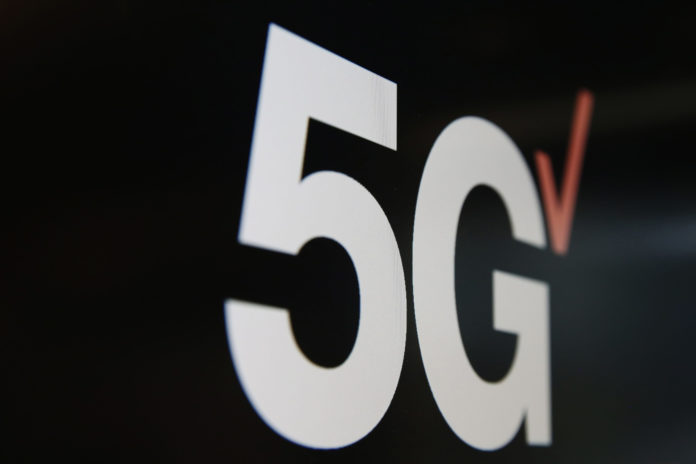
The Federal Aviation Administration said Thursday it had cleared more than three-quarters of the nation’s commercial fleet to land at airports where interference from 5G signals could pose a danger in bad weather, but indicated that some planes might never secure approvals.
The agency has been reviewing devices called radar altimeters to determine whether they can still provide reliable measurements of altitude – critical information for landing in bad visibility – in areas with 5G towers. The potential for disruption became clear Thursday, when San Francisco-bound flights were diverted and others were forced to circle as poor visibility collided with the rollout of the new wireless networks.
The diverted flights involved planes that had not been cleared to land where 5G could interfere with radio altimeters. The diversions are the latest challenge in a rollout that mostly spared large airports and airlines but has raised fresh questions for smaller regional carriers.
The FAA issued a bulletin Thursday warning that diversions were possible at eight airports across the country where bad weather was forecast “due to the nationwide expansion of 5G C-Band and the potential for radio altimeter interference.”
In a subsequent statement, the agency said, “We anticipate some altimeters will be too susceptible to 5G interference. To preserve safety, aircraft with those altimeters will be prohibited from performing low-visibility landings where 5G is deployed because the altimeter could provide inaccurate information.”
The C-band refers to the spectrum used for high-speed wireless Internet, which is close to the frequencies used by altimeters, creating a risk of interference. The FAA has been analyzing airplane models to determine whether they can operate safely close to 5G towers, clearing 78% of the nation’s commercial fleet. Some regional Embraer jets were among those to gain approval from the FAA on Thursday, but none made by competitor Bombardier had been cleared.
It was those models of planes that faced delays and diversions Thursday.
Tim Donohue, a co-founder of Aerology, a start-up that predicts air travel disruptions, said he had counted nine planes in holding patterns near San Francisco International Airport. At least five flights operated by SkyWest Airlines bound for San Francisco had to be diverted.
United Airlines shared with customers a blunt message after it canceled a regional flight Thursday from Sacramento to San Francisco.
“Your flight is canceled due to new federal rules to prevent interference between 5G technology and your aircraft,” the message read. “We’re urging the federal government to fix these rules.”
The 5G networks went live Wednesday with buffers around airports after a prolonged battle that pitted airlines against Verizon and AT&T – which activated the new 5G networks – and the FAA against the Federal Communications Commission. Airlines reported few disruptions, but the head of the Regional Airline Association warned that was mainly because of good weather.
The regional carriers are a critical link in the aviation system, tying smaller airports to major hubs. Many of the affected flights Thursday were operated by SkyWest Airlines, a regional carrier that serves Delta Air Lines, American Americans, United Airlines and Alaska Airlines.
One of the diverted flights went to Monterey, Calif., and three to San Jose, according to data from Flightradar24. A SkyWest flight from Boise bound for San Francisco made loops near Petaluma, Calif., only to be diverted 180 miles to land in Reno, Flightradar24 data shows.
SkyWest said in a statement that the new FAA clearances Thursday applied to at least some of its jets, including models affected earlier in the day.
“The potential for ongoing operational impact remains until full mitigations can be put into place for all commercial aircraft,” the company said. “As always, we will not compromise safety.”
Faye Malarkey Black, president and chief executive of the Regional Airline Association, said the FAA’s decision to clear additional aircraft has helped, but many carriers are still unsure of what will follow.
“When the big guys are covered, the tendency is to think that we’ve averted the worst of the crisis, but this is not solved until all parts are whole,” she said.
Despite the concerns of regional carriers, the leaders of major airlines said they expected few issues and were pleased that the aviation industry and wireless companies were working together on the concerns that remain.
Scott Kirby, chief executive of United Airlines, expressed relief Thursday that the 5G rollout agreement allowed for the technology’s deployment with only a minimal effect on flight operations.
“While I wish it had happened earlier, the good news is that we now have everyone engaged: the FAA, DOT and those at the highest levels of the equipment and aircraft manufacturers, airlines and telecoms,” Kirby said. “I am confident we’ll soon have a clear set of objective criteria that will allow full rollout of 5G without significant impact to aviation.”
(c) 2022, The Washington Post · Ian Duncan, Lori Aratani
{Matzav.com}